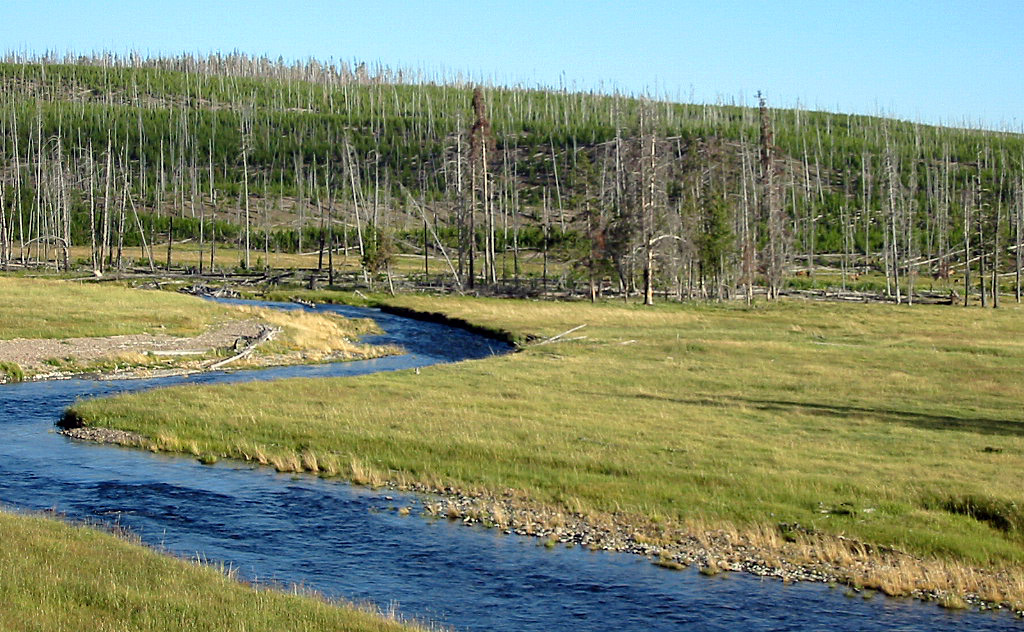The Gibbon River begins in the center of Yellowstone National Park, at Grebe Lake. It flows for a short distance into Wolf Lake. Below Wolf Lake, the Gibbon River twists and turns through beautiful and varied country before meeting with the Firehole River at the beginning of the Madison River.
The upper section of Gibbon River has very difficult access, involving bushwhacking through thick forests and with lots of downed timber. The fish, consisting of brook trout, cutthroat trout and grayling are all on the small side, rarely exceeding 10 inches.
Better fishing is found where the Gibbon River crosses the Norris-Canyon Village Highway near Virginia Cascade. In this area, the Gibbon River has lots of undercut banks, some pools, and crystal clear water. Rainbow trout, brown trout and brook trout are all found in this section of the Gibbon River. Standard bushy dry flies work well on this section of the river.
Downstream from Virginia Cascade, the Gibbon River skirts near Norris Geyser Basin. The water temperature warms significantly with the addition of thermal water.
The river passes through several beautiful meadows, all of which provide good fishing for brown trout. Many undercut banks are found along with some deep pools. The river tends to be narrow and the brown trout wary. Careful presentation on light tackle is needed to have successful fishing on this section of the Gibbon River.
Below these meadows, the Gibbon River approaches Gibbon Falls. The river has extensive riffles and pocket water on this section with numerous rainbow, brown and cutthroat trout averaging around 10 inches.
The Gibbon River than goes over Gibbon Falls, a beautiful ninety foot waterfall. Below the falls, the Gibbon River has lots of riffles, pools and pocket water. Excellent late summer fishing can be had using terrestrials such as hoppers. Fall also offers an excellent time to fish for the larger brown and rainbow trout that migrate up from the Madison River to spawn. During this period, the Gibbon River receives a fair amount of fishing pressure on this section, as anglers travel from all over the country to catch these large, migrating fish.



